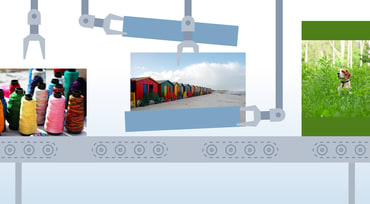Media makes up the majority of today's website content. While it makes websites more interesting for visitors, media presents challenges because these images and videos are more difficult to store, deliver and manipulate on-the-fly to suit any given situation.
It took nearly four years, four proposed standards, the formation of a community group, and a funding campaign to pay for development, but we finally got what we've been clamoring for—a solution for responsive images baked into browsers. Now the hard work begins.

How you present the content of your website can be just as important as the content itself. The images you display need to conform to the graphic design of your site, and every image needs to fit within a predefined size. Although that may be simple enough to achieve when you are dealing with your own images, the task can be more challenging when displaying images uploaded by your users.

Last week, I was invited to an exclusive hackathon to build apps for musicians. The app team I was assigned to was tasked with building a video upload site for Bounce videos. Bounce is a style of music that originated in New Orleans. The app would be called BounceDotCom.com and there were plans to have Big Freedia, the Queen of Bounce, promote it. I knew the organizer could make things happen, so I jumped at the chance.

This is part 2 of a 3 part series
React has become more popular, as well as more mature, over the last four years since its release by Facebook. It has become one of the go-to technologies for people looking to componentize the front-end of any web application. It also helps that an entire mobile stack is built around React in the form of ReactNative. The components are wonderful, however there can be a burdensome learning curve. But, in the end, there’s the payoff of highly reusable code and a better user experience.

To start building a user interface, you might use React, a JavaScript library for building flexible and reusable components. However, you also need a supporting tool for managing digital media (images and videos). The recently announced React SDK from Cloudinary capably serves that purpose.

Vue.js is a progressive frontend framework which is the latest workflow and productivity trend. Its simplicity and approachability is what makes Vue.js outstanding among the pool of frontend frameworks. You may not be using Vue.js right now because you already know other JS frameworks and don’t want to learn another. But it’s important to keep in mind that a good framework is built to improve on the weaknesses of the existing ones. This is exactly what Vue.js has done.

According to a W3Techs survey, the images on 74 percent of websites worldwide are in JPEG or PNG format and for good reason: those images display well on all browsers. However, several newer image formats are well worth consideration, a leading example being WebP. This post describes how to adopt WebP as your image format and, accordingly, lower your image weight by approximately 30 percent and reduce the load time of your websites or native apps.

Thrillophilia is India’s largest online tours and activities platform. Through its website and app, the company offers a one-stop solution for travelers looking for tours, activities and things to do. Users can choose from more than 10,000 activities in 200+ cities in India and 15 countries in Asia. Headquartered in Bangalore, India, the company was founded in 2011 and employs more than 50 people.

I’m not going to lie, Progressive Web App (or PWA) have become a bit of a buzzword, with many developers singing its virtues and proclaiming that it solves all of their problems. Progressive Web Apps aren’t going to cure cancer or make you a billionaire on their own. But they can make your Web Apps a lot more approachable and performant.
